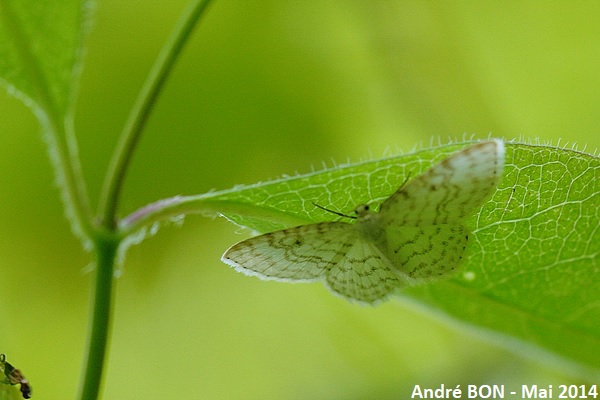
| Small White Wave (Asthena albulata (Hufnagel, 1767)) |

|
|
Scientific name: Asthena albulata (Hufnagel, 1767) Common name: Small White Wave French name: Phalène candide Order: Lepidoptera Suborder: Heterocera Family: Geometridae Subfamily: Larentiinae Wingspan: 20-22mm. Biotope: Deciduous forests. Geographic area: All Europe, Asia Minor to the Caspian Sea. Flight time: May-June and then July-August. Number of generations : 2 Caterpillar: Pale yellowish green with scarce black hairs and reddish markings extending dorsally close to both tips and laterally on the middle segments. Host plant: Various deciduous trees including Birches (Betula), Oaks (Quercus), Hornbeams (Carpinus), Hazels (Corylus), Dogwoods (Cornus), etc. |
The Small White Wave's fore wings and hind wings show a silky white ground colour. The wings are crossed by thin golden lines and bear a row of tiny black dots on the margin. There is a well marked small black discal spot on the fore wings. The two golden cross lines in the median area of the fore wings are irregularly wavy and very close to each other. They sometimes touch at some points. The Small White Wave is attracted to light. It over winters as a pupa. There is a possible confusion with the Dotted White Wave (Asthena anseraria). You can recognize this last species with the well marked black discal spots on the hind wings and with a larger gap between the cross lines in the median area of the fore wings. |
| [To know more about the Small White Wave] [Top] |

|
I had many difficulties to shoot pictures of this species and the result is not yet very good (even rather bad). This Small White Wave was used to hiding from paparazzi by landing on the underside of tree leaves. |